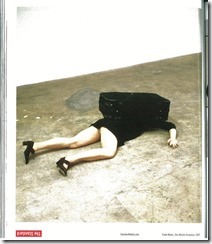It’s not as if I’ve never called 911.
Why, in just the last couple of years, I have dialed it on several occasions.
Last December, we smelled burning wires. The odor seemed to me to be emanating from our heating system. It seemed to my husband, who just happens to be the great-great-grandson of Ebenezer Scrooge, that, somehow, my plugging in the Christmas tree - with those oh, so, powerful tiny white lights – had sparked a chain of Bad Events that was going to burn the house down.
After examining the tiny-white-light wire and plug, and the wall socket, my husband conceded that this was not very likely to be the source of the burning wire smell.
We waited a bit to make sure that the smell was not dissipating – it wasn’t – and proceeded to call 911. When I got the dispatcher, I explained that while this did not seem to be an emergency-emergency – there were no flames licking the walls, no smoke billowing from the vent registers – it did seem worthy of a check out. I asked whether they would advise us to call our HVAC service 24 hour number, or whether they thought the BFD should come by.
Not surprisingly, the answer was BFD. An engine was dispatched, and after a walkthrough of our condo, the BFD declared that, while it was good that we had called, it was not a bfd. We did have a smoldering wire in our heat exchange, but once the heating system was shutdown, we were not to worry. (I also got the BFD to declare that plugging in the Christmas tree had absolutely nothing whatsoever to do with the incident.)
Not having heat wasn’t the most pleasant thing in the world, this being New England in December, but we survived.
Earlier in the same year, I had been at The Writers Room of Boston on a Sunday, working with a friend and fellow member, along with my 15 year old niece, to defrost The Room’s ancient, ice-impacted dorm-sized fridge, which is used primarily to house members’ lunch yogurts, milk for coffee, and left over lunches (which are typically left to go bad). Marilyn and I were doing our civic duty as members. By assisting with Operation Defrost, and helping out a needy non-profit, Molly was earning a couple hours to check off her community service requirements list.
Anyway, in my zeal to complete the project, I managed to sever the Freon line.
Marilyn and I had the presence of mind to get us all out of the kitchen, shut the door, and open a number of windows. Oh, yes, and to dispatch Molly to the downstairs lobby a.s.a.p. so that she wouldn’t be inhaling any Freon.
Heads hanging out the windows so as not to breathe the Freon-ish air, I tried googling to see what level of haz-mat this was. Meanwhile, Marilyn tried to get a hold of her son-in-law the chemical engineer.
When neither of us was able to easily find the answer, we joined Molly in the lobby, where I called 911.
Again, I explained that this was not a grave emergency, but that we just wanted to talk to someone about whether The Room was a haz-mat site, whether we needed to inform the building manager, whether someone who had breathed in some Freon should seek medical attention, etc.
Well, it was a slow Sunday morning in downtown Boston, and the jakes were getting bored hanging around the station, so within a couple of minutes, we had a fire truck out front, and a couple of laughing firemen explaining that the only way the Freon would have harmed someone was if a double-wide freezer-fridge had exploded in something the size of a telephone booth. One of the firefighters volunteered to go up and toss the dorm fridge out the window for us, but we declined.
My third recent 911 encounter occurred after I witnessed a wrong-way bicyclist struck by a delivery truck. The bloody bicyclist was hurled into the air, nearly landing on me, and after I quickly assured him – based on no particular wisdom or authority – that he was going to be all right, I called 911 to report an accident. (By the way, the guy was all right, even though the way he was bicycling was all wrong.)
Of these three incidents, the one where I probably should have called the non-emergency number was the Freon blast – even if I was extremely happy to have the firefighter assurance that Molly was going to be okay.
But, let’s face it, 911 is more memorable than whatever the non-emergency equivalent is. (There is a 211 number but, when I read up on it, it sounded a bit too non-emergency-ish.)
Anyway, over the period during which I called 911 three times, I would estimate that we lost Internet and/or TV service on at least a half dozen occasions.
These occurrences prompted a) grousing, b) calls to Comcast, c) checks on the old Blackberry to see whether there were outages in the area.
It would not have occurred to me in a billion years to call 911.
Then again, I don’t live in Fairfield County, Connecticut, and I don’t watch Breaking Bad, which was apparently on the other evening, when Fairfield was flooded with 911 calls from upset Cablevision subscribers.
The Fairfield Police Department was not amused and took to its Facebook page to post a refresher course on using its emergency system. The message read:
"We are receiving numerous 911 calls regarding the Cablevision outage. This is neither an emergency or a police related concern. Please direct your inquiries to Cablevision. 911 should only be called for Life Threatening Emergencies ONLY. Incidents that are not of an emergency nature may be reported to the Fairfield Police Department. ... Misuse of the 911 system may result in an arrest." (Source: Hartford Courant.)
What would possess someone to call 911 because they didn’t have TV reception?
I don’t typically set myself up as any sort of paragon of normalcy, but isn’t my typical reaction to a cable outage the normal one?
I.e., what is called for is a combination of a) grousing, b) calls to the cable provider, c) checks on the old smartphone to see whether there were outages in the area.
Tell me that almost the entire population of Fairfield, Connecticut, doesn’t have an iPhone that was not impaired…
Calling 911? What a bunch of boo-boo babies.
One commenter on the Fairfield FB page suggested that because the evening’s episode of Breaking Bad was “super-intense and very riveting”, the people who called 911 “ not thinking rationally when reaching for the phone." Which the commenter found “kind of awesome.”
Well, I guess in a way that a TV show can be so “riveting” and “super intense” that viewers suspend the rational parts of their brain is “kind of awesome.”
I certainly got swept up in the final episode of The Sopranos.
But I think that if cable had broken bad while Meadow was parallel parking outside the diner, and Tony was starting to play Don’t Stop Believing on the juke box in the booth, I would have started swearing my head off. And looking for the #$*&&(@!!!&(*number for Comcast.
I might not have been quite as calm as Fairfield resident Benn Gott, who wrote:
"When my Internet went out an hour ago," he wrote on Facebook, "I took a hint, put one of my dad's old jazz records on the turntable, and pulled out a good book. That, plus the crickets and peepers, has turned this into a very good night indeed."
But I don’t think it would have occurred to me to call 911.
-----------------------------------------------------------------------
I first read about this in an AP article on boston.com.
 Although, now that I think of it, The Standard might be a bit out of the price reach of the average hipster, who is no doubt more likely to seek out the type of raffish hotel that William Burroughs might have overdosed in. But, nonetheless, The Standard does seem to strive to give off an artsy sensibility, and where there’s an artsy sensibility, surely there’s a hipster sensibility as well.
Although, now that I think of it, The Standard might be a bit out of the price reach of the average hipster, who is no doubt more likely to seek out the type of raffish hotel that William Burroughs might have overdosed in. But, nonetheless, The Standard does seem to strive to give off an artsy sensibility, and where there’s an artsy sensibility, surely there’s a hipster sensibility as well. enticing:
enticing: ad down dining woman’s shirt? No wonder people order from room service.
ad down dining woman’s shirt? No wonder people order from room service.









